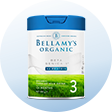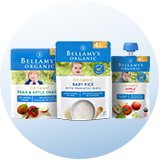Organic Health
Health is commonly cited as a primary reason for people choosing to purchase and consume organic food products. (1,2). There are well accepted differences in the amounts of nutritionally important compounds between organic and conventionally produced foods that might lead to potential health benefits (3-5). For example, crops that have been grown organically have been reported as having higher concentrations of antioxidants and increased dietary intakes of such antioxidants have been associated with a reduction in risk for cardiovascular and neurodegenerative diseases as well as some cancers (3,6,7). Also, organically grown crops have been reported to have lower quantities of the toxic metal cadmium and are much less likely to contain detectable pesticide residues (3), and it is generally accepted that the consumption of organic foods is likely to reduce exposure to such residues (8-10). Organically produced cow’s milk has been reported to have a different fatty acid composition to that found in conventionally produced milk and that the specific composition of such fatty acids found in organically produced cow’s milk is more desirable from a health perspective (5).
In one large French study, involving more than 54,000 people, regular consumers of organic products had a markedly lower probability of being overweight or obese, when compared to those who did not consume organic products. The was a reduction of risk of being overweight of 36% and 42% in men and women respectively and a reduction of risk of being obese of 62% and 48%, again in men and women respectively (11).
References
1) Rizzo G et al, Organic food consumption: The relevance of the Health Attribute. Sustainability, 12. 595.2020. Doi:10.3390/su12020595
2) Hamilton, K.; Hekmat, S. Organic food and university students: A pilot study. Nutr. Food Sci. J.15, 133–134. 2018
3) Barański M et al. Higher antioxidant and lower cadmium concentrations and lower incidence of pesticide residues in organically grown crops: a systematic literature review and meta- analyses. Brit J Nutr. 112:794–811. 2014
4) Średnicka-Tober D et al. Composition differences between organic and conventional meat: a systematic literature review and meta- analysis. Brit J Nutr. 115(06):994–1011. 2016
5) Średnicka-Tober D et al. Higher PUFA and n-3 PUFA, conjugated linoleic acid, α-tocopherol and iron, but lower iodine and selenium concentrations in organic milk: a systematic literature review and meta- and redundancy analyses. Brit J Nutr. 115 (06):1043–1060. 2016
6) Del Rio D, et al. Dietary (poly)phenolics in human health: structures, bio- availability, and evidence of protective effects against chronic diseases. Antioxid Redox Signal 18, 1818–1892. 2013
7) Wahlqvist ML Antioxidant relevance to human health. Asia Pac J Clin Nutr 22, 171–176. 2013
8) Smith-Spangler C, et al. Are organic foods safer or healthier than conventional alternatives? A systematic review. Ann Intern Med 157, 348 – 366. 2012.
9) Curl C, et al, Organophosphorus pesticide exposure of urban and suburban preschool children with organic and conventional diets. Environ Health Perspect 111, 377–382. 2003.
10) Leifert C, Control of enteric pathogens in ready-to-eat vegetable crops in organic and ‘low input’ production systems: a HACCP-based approach. J Appl Microbiol 105, 931–950. 2008.
11) Kesse-Guyot E et al, Profiles of organic food consumers in a large sample of French adults: Results from the Nutrinet-Sante cohort study. PLOS One. 8. 10. E76998. 2013.
































